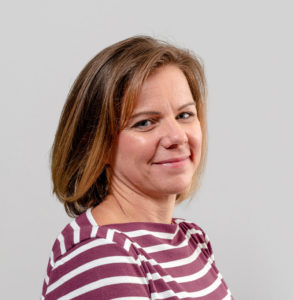Fire safety starts with thinking like a ten-year-old
19 Desember 2017

You might say that fire safety in organisations starts with following the rules. After all, the rules are there for a reason, aren’t they? And yet, compliance far from covers everything. This might seem like swearing in church, but those who keep faithfully to the rules and standards may unwittingly introduce risks in an organisation. And those who use common sense – or think like a ten-year-old, in other words – raise risk management in an organisation to a higher level.
One example from my work in risk management shows what this is about. While conducting an inspection in the port of Rotterdam, I noticed that mechanics were working in the hold of a ship on a warm summer’s day. It was boiling hot and in a space like that temperatures soar. I could actually understand them working in summer clothing, wearing only shorts and no shirt or overalls. But fortunately they were working safely. They were following all the rules, wearing gloves, safety vests, safety shoes and safety glasses.
Are rules pointless?
What does this example show? That some rules are pointless if you take them literally? I think that common sense tells us that these people were not working in the spirit of the rules.
Another case was about fire safety on a balcony in a beautiful new apartment building. In older buildings, the balconies were very confined. Two people could just-to-say sit there. But this balcony was very spacious; you could have held a barbecue party for ten people there. The question here is whether a balcony like that with a burning barbecue is safe enough. There was no emergency, so we just asked the experts. The architect/contractor told us that according to the Dutch Building Act, no account needed to be taken of the storage of wood, plastic or other combustible materials in assessing the safety of balconies.
The rules say it’s safe!
And that was the end of the discussion on fire safety as far as this expert was concerned. The rules say that it’s safe, so it must be safe. But even a ten-year-old can see that a barbecue can get out of control, or that a gas bottle might be defective and leak. Or that a tablecloth might catch fire, and then the waste paper that happened to be there, some plastic and the wood store. And then? Could such a fire then spread to the balcony above? I say: whoever sticks faithfully to the rules can unwittingly introduce risks to an organisation. In London, and several times in Dubai, we have seen that high-rise residential blocks often entail specific fire risks. Adhering too faithfully to the rules does not contribute to fire safety. Unfortunately, this way of thinking is widespread.
‘What should weigh on the constructor’s conscience is: are you going to hide behind the rules, or are you going to do slightly more than is strictly needed?’
For example, there are fire-safety regulation for tunnels. They are there for a reason. For instance, there are disasters such as happened in the Mont Blanc tunnel in Switzerland. But the strictest rules apply mostly to tunnels longer than 250 metres. Among these rules are the Dutch Building Act, which actually dates from the nineteen-seventies. For a 245-metre tunnel, a constructor does not have to take so many safety measures at all. In my opinion, what should weigh on this constructor’s conscience is: are you going to hide behind the rules or are you going to take a serious look at the rules and perhaps do slightly more than is strictly needed?
Following the rules less slavishly
I think that we have to be less slavish in following the rules when assessing risks. That applies to organisations that want to introduce good risk management, but certainly also to insurers and inspectorates. The big question has to be: what are the weighted risks actually, and what do the measures that should be taken to minimise risks and prevent damage actually look like? I perfectly understand that there has to be guidelines, so that official bodies can approve or reject situations and measures, but this should not be an exact science. I think that you might successfully advocate on the basis of arguments, in dialogue, that a situation is safe ‘in the spirit of the rules’, even though it departs from the ‘letter of the rules’.
‘It’s good that there are guidelines, so that official bodies can approve or reject situations and measures. But it should not be an exact science.’
Take, for example, the following situation, which is once again taken from practical experience. According to the rules, the cables for a fire alarm installation had to be attached in a very specific way – clamped to the wall. The rules said ‘every 40 centimetres’. I saw that the installation was disallowed because the clamps were placed at 42 centimetres in certain places. There were good reasons for doing this, and apart from that the cables were installed fully according to the book. The rejection was frustrating for everyone involved – and unnecessary in my opinion.
In dialogue, with arguments
In such a situation, it would help if we could have more room to discuss working methods and choices in dialogue, on the basis of arguments. On the basis of plain common sense. Or, to say it again, as a ten-year-old would do. What could go wrong? What are the scenarios and how would you cope with them (aside from standards)? What is safe really? There has to be standards, but they should make us think, and not obscure our vision.
Tom de Nooij
Managing partner Riskonet





